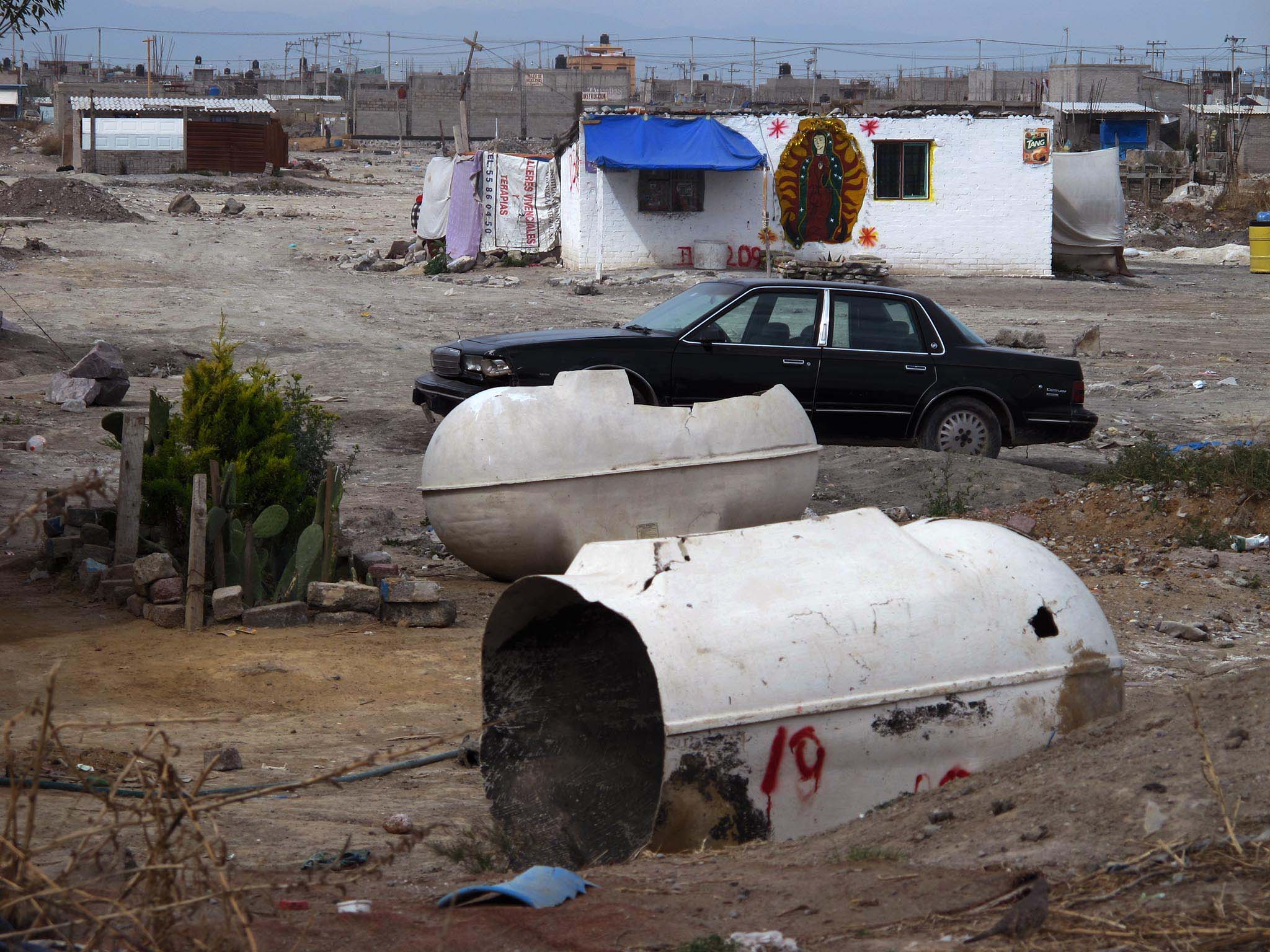I left the hotel with its ceiling mirror and walked over the highway to Texcoco along the usual garages and shops selling auto parts. When I reached a large green field marking the edge of the city I followed it left over a dirt path crossing fields with half-built houses. After a kilometer a wide ditch with black water separating Chimalhuacán from the Lake of Texcoco defined the path I had to follow. Graffiti marked the walls along the route. It was not the tags and painting I was accustomed to. The corner of the houses separating the houses would be marked with initials such as LxFxA – which would be the La Familia Azteca – every few blocks there would be other initials, the gang graffiti of children and adolescents, with the cholo-style gangster “e” written somewhat like “3”.
Everything in Mexico is territory of somebody. These territories end where street blocks end and by extension where the city ends. As I continued I became increasingly aware and worried about corners. You cannot see what is ahead of you when you turn a corner. And a corner is the best place to watch a neighborhood. This area of Chimalhuacán was the most apocalyptic I had seen, with its half-built houses, sewage canals and dusty urban desert. I was still too naïve to understand that a truly dangerous area does not have graffiti by children on its walls. So the initials on the corners of houses and roll calls of names of gang members scared me and I approached every corner worried about the dangers lying behind it.
Dogs sprawled the street and a woman in a convenience store said the neighborhood was quite dangerous though not as dangerous as it had been before. Abandoned football fields of salty dust extended into the lake basin. I continued and reached a large garbage dump that was not marked on my map. Carts drawn by donkeys and mules carried refuse up and down the mountain of garbage. Garbage collection with all its stops and starts is perfect for these animals. The garbage dump crawled with people collecting recyclable objects. The detritus of the city surrounded the site, truck tires and broken tubing among drainage ditches and swirling flies.
I continued and came upon a roughly painted mural with all of the symbolism of Mexico: virgin of Guadalupe, pyramids, Aztec warrior. I was amused to see the painting of a man meant to depict a corrupt missionary wearing the same hat as I was. Finally after passing through these badlands on the edge of the Lake of Texcoco I came upon a bridge over the canal marking the passage into Ciudad Nezahualcóyotl, where the edge of the city was also a garbage dump.

I stopped to enter the garbage dump but a group of men sitting in front one of the various shanties along the dump stopped me. He said I would need permission from the municipal authorities to enter the area. I sat with them awhile.
The dark man in his fifties with deep lines in his face and grey streaks in his hair, in worn jeans and a baseball cap, all very dirty, told me that the people living in the shacks rented them. Nobody owned such a shack, so nobody had an interest into turning it into something more permanent. The people who rented worked in the garbage dump. More than being worried about the authorities this man was worried about other groups of squatters taking over this area.
I continued along the Bordo de Xochiaca until reaching Ciudad Jardín, the shiny new shopping mall built by Carlos Slim. It was beautiful and shiny and bright, doing a great business in pre-Christmas season. The glamorous and expensive mall was a huge success seamlessly linked to the culture of the television advertisement. Coming in from the dust and garbage it was like walking into a television set.
